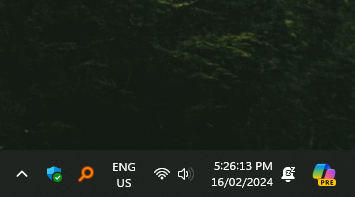1012
you are viewing a single comment's thread
view the rest of the comments
view the rest of the comments
this post was submitted on 17 Feb 2024
1012 points (96.6% liked)
Technology
75745 readers
614 users here now
This is a most excellent place for technology news and articles.
Our Rules
- Follow the lemmy.world rules.
- Only tech related news or articles.
- Be excellent to each other!
- Mod approved content bots can post up to 10 articles per day.
- Threads asking for personal tech support may be deleted.
- Politics threads may be removed.
- No memes allowed as posts, OK to post as comments.
- Only approved bots from the list below, this includes using AI responses and summaries. To ask if your bot can be added please contact a mod.
- Check for duplicates before posting, duplicates may be removed
- Accounts 7 days and younger will have their posts automatically removed.
Approved Bots
founded 2 years ago
MODERATORS

It's not overly technical, just has more nuance :
A Window Manager is a type of compositor or X client (depending on if it's based on Wayland or Xorg respectively) that manages the placement and appearance of windows on the screen.
It is responsible for the appearance and behavior of windows, determining the border, title bar, size, and ability to resize windows, and often providing other functionality such as reserved areas for sticking dock-apps or the ability to tab windows.
It can be part of a Desktop Environment(DE) or be used standalone.
Often times when WMs are referenced it's in reference to standalone WMs which are often keyboard centric and come in various different forms. For example tabbed, tiling, dynamic, stacking, dynamic tiling, etc.
Some popular Xorg based WM in Linux include i3, BSPWM, DWM, Awesome, Fluxbox, Openbox, WMii, Xmonad, etc.
Some popular Wayland based WM including Sway, Hyprland, River, DWL, NeWM, etc.
Then there's WMs built-in to Desktop Environments like Kwin(KDE Plasma) and Mutter(Gnome).
If you're interested there's an Arch Wiki with even more info.
Kinda figured you wouldn't want to be hit with a wall of text... lol 🫣
We have Valve Proton now, that while not-perfect works most of the time. Wikipedia has an excerpt on it. You can use this guide to enable it in steam.
It could be, but often something like Linux Mint or ZorinOS can be a better fit. It depends on you're use-case.
I'm not too sure, I'm not really a beginner anymore... but !linux@lemmy.ml is open to questions, I've personally been answering questions there too. There's also !linuxquestions@lemmy.world & !linux@lemmy.world.
You can always hmu.
Generally there already included in the kernel. If not, it can be a pain.
A clever work around I came up with is to use USB tethering with your phone to share WiFi which works 99% of the time, then from there you can add the drivers more easily.
Not too hard to learn, unless you're writing scripts you don't need to know that much.
You can use
man command,command -hor tealdeer for help pages.You can watch this 100s video for a real quick overview of bash, and this 20m video for a full quick and easy Terminal/Bash beginner tutorial.
The vast majority of this is transferable to other shells like Zsh.
Ampersand Operator (&): Runs a Linux command in the background.
Semi-Colon Operator (;): Runs multiple commands.
AND Operator (&&): Runs the second command only if the first command succeeds.
OR Operator (||): Conditionally executes the second command.
Cheatsheet for more.
man file-hierarchy 😜
There's not much different for filetypes, I mean Linux uses a combo of mimetype/magic numbers and file extensions e.g. image".example" for identifying filetype.
I guess maybe you're confused about shell scripts.sh, binary.bin filetypes? those are executables like .exe.
If you have a specific question, that'd be easier to answer.
Probably Ventoy to make distro hopping easier. Here's a good video on it from a great YT'r. Just use use the live environment to mess around and see which one you like/works best for you.
I think I understand, you mean like mounting an external hard drive in a different filesystem format not working?
In any case just hmu if you have any trouble.